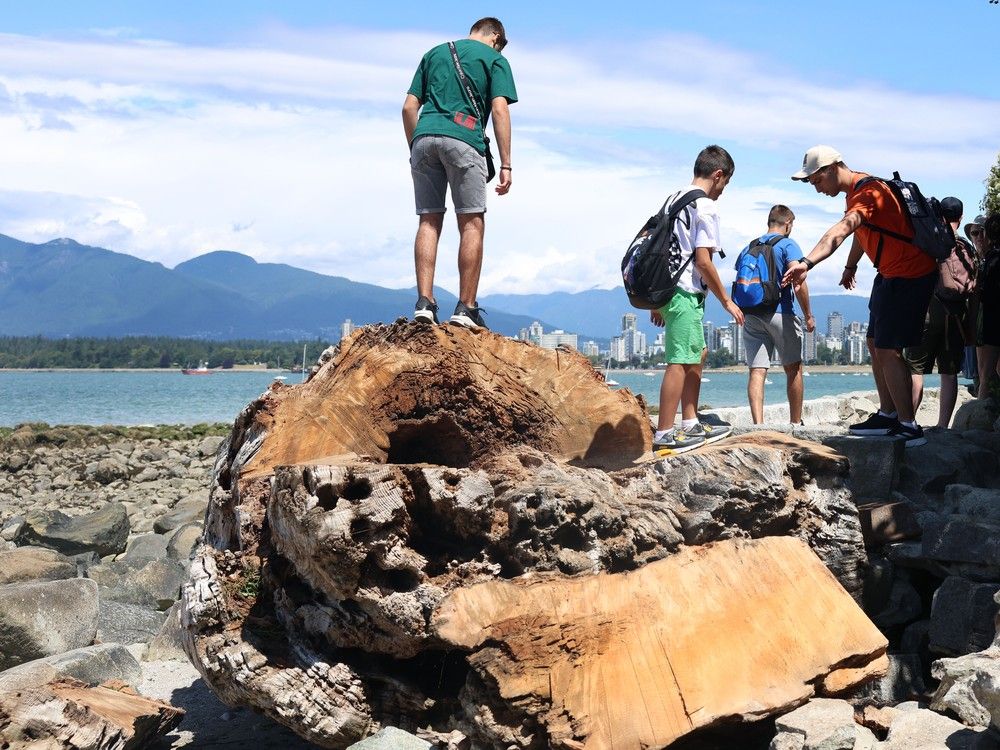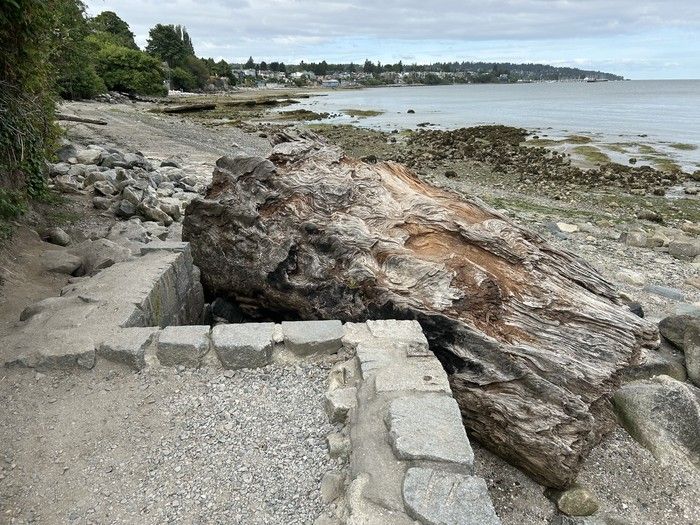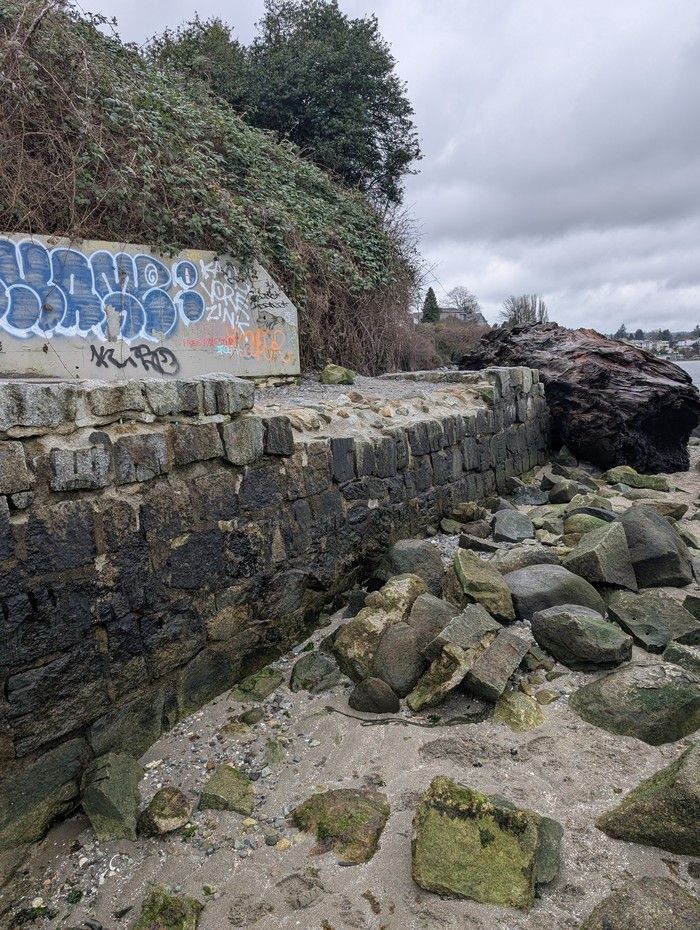
A giant cedar log that washed up on the beach at the foot of Trafalgar Street in Kitsilano decades ago has been chainsawed by the city because it was deemed a “structural threat” to a nearby retaining wall.
Over two metres tall, and twice as long, the log was a beach sculpture worn smooth by the sea, a favourite sitting place, a log for starry nights, and a perch for dogs and children to climb.
The log was cut into sections last week, and will be removed, following a decision by park board staff.
The destruction of the log came without any warning or public consultation.
“It hurts me, I could feel it in my chest,” said Gillian Hurtig, a longtime Vancouver resident. “Where else could we see something that magnificent from nature so close to us?”
Hurtig said the destruction of the log raises important questions about how we define assets in the city of Vancouver.
“Ask the people who walk down there every day: How often has anyone come down and sat by that log and marvelled at it?”
As Kitsilano grapples with massive developmental changes that will bring dozens of new highrise towers to the area, it also raises questions about what people value about the city.
Landscape architect James Rees, who has photographed the log over several decades, said he accepts that things change. But this is different.
“To have that desecrated was like ripping out a piece of my heart. It is gut wrenching. I couldn’t believe it.”
Rees said an elder told him the log had 880 rings and was centuries old. It had most likely washed ashore in the early 1960s when there was significant logging of old-growth in B.C.
“It’s a huge tragedy,” said Vancouver park board commissioner Tom Digby.
Digby called it a piece of iconic natural art, “thrown up by a mix of environment and industry,” and a valuable reminder of how settlers moved on Indigenous land.
“It’s an example of how we misused old-growth forests. We could look at it and ask, how could we kill this massive cedar tree? How could we abandon it in the ocean? How did it wash up randomly at a place like this?”

When Digby heard the log was being cut up, he reached out to board chair Laura Christensen.
“I said, ‘You’ve got to stop this,'” he recalled.
It was too late. Nor was it within the authority of elected commissioners.
Actions related to public safety are made independently by staff.
“Operations made the decision,” said Digby.
Amit Gandha, director of park operations, said the log came to the attention of staff last week during a routine examination of the retaining wall at the foot of the stairs leading to the beach from Trafalgar Street and Point Grey Road.
The log, which over the years had been sitting on the foreshore at a right angle to the stairs, had been pushed up against the base of the stairs by the tide.
“This log has been acting as a battering ram since the King Tides of last year, and part of the wall had been completely destroyed,” said Gandha.
The stairs are no longer accessible without clambering through a small path alongside the log.
Operations staff determined the log could not be salvaged or removed due to its size and weight.
“Next to impossible,” said Gandha.
“People go down there no matter what time of year, no matter the conditions. It can shift and move when tides come in. If people are trying to squeeze through, that is a massive concern. Once staff sees something like that we need to address it.”
The decision was made to section it into three parts and move it out piece by piece.
Gandha said jurisdiction was “a grey area.” In B.C., the provincial government owns the foreshore area between high and low tide, but the park board has a permit to remove logs that wash ashore that may damage infrastructure.
“We are still responsible for making sure that beaches are safe. We are constantly removing logs and debris that wash ashore.”

Gandha said he understands people feel a connection to the log, but it wasn’t considered “an asset” in their inventory.
This was just another piece of driftwood.
“The destruction of this log is such a sad, sad statement and symbolic of the direction that the city is going,” said former city councillor Colleen Hardwick, who played on and around it as a kid, and sat on it staring out at the ocean with friends in high school.
“This shows a real lack of appreciation for all that is special about this city.”
Rees calls the foreshore where the log’s remnants sit “a sacred natural space,” that must be protected.
He is hoping someone will find a way to piece the log together again.
“Can we put it back together? Can that be part of its history? That we put it back together again, and put it somewhere to be appreciated for another 800 years.”